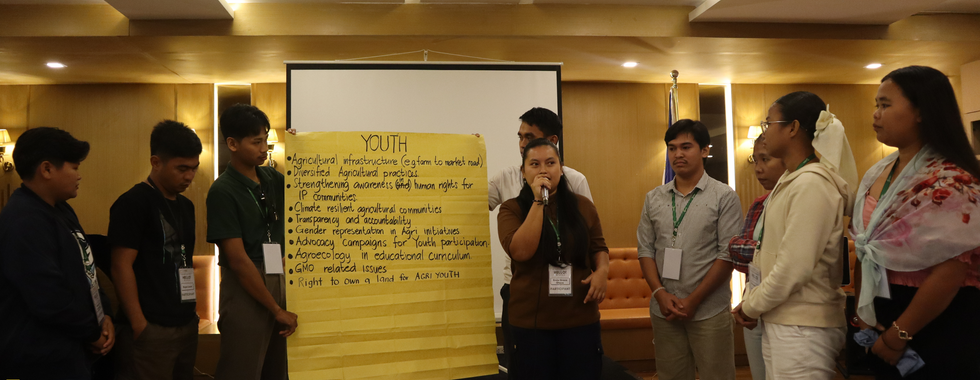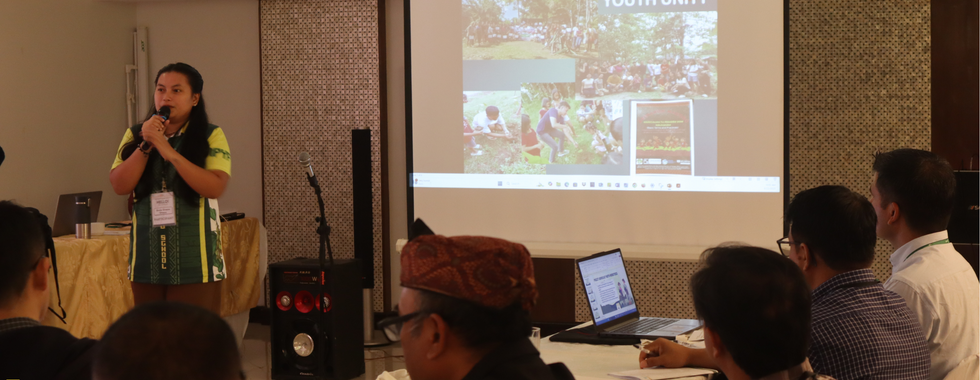Strength of Today: Youth Voices in the Struggle for Farmers’ Rights
- Khristine Maguddayao
- Sep 24
- 3 min read

“Youth is not only the hope of tomorrow—we are the strength of today.”
These words by Jayzent Claro Sembrano, a youth advocate from Negros Occidental, captured the spirit of the Regional Workshop on Sustainable Food Systems and Farmers’ Rights: Best Practices and Ways Forward held last September 13–15, 2025. He said this during the final reflection and feedback session, but the quote reverberated across all three days of the workshop — reminding everyone that the struggles of agriculture are not only intergenerational but deeply collective.
Organized by Southeast Asia Regional Initiatives for Community Empowerment (SEARICE), the workshop gathered farmers, advocates, and partners across Asia to reflect on best practices in agroecology, exchange grassroots innovations, and collectively plan pathways forward. At its core, the gathering was about defending Farmers’ Rights and ensuring that seeds, knowledge, and biodiversity remain in the hands of farming communities.
Instead of being treated as token participants, the youth from Agusan del Sur, Aklan, Aurora, Bohol, Davao, Negros Occidental, North Cotabato, Palawan, and Pangasinan in this workshop were recognized as equal actors in shaping the future of farming. Space was deliberately opened for them — in exhibits, in policy conversations, and in collective reflections — to make sure their voices stood alongside those of older farmers.
Youth Participation from the Margins to Center
Farming remains one of the most precarious forms of labor, marked by unstable incomes, harsh working conditions, and limited institutional support. Unsurprisingly, fewer and fewer young people today see farming as a viable future. Yet the youth participants at the workshop demonstrated that disengagement is not apathy. Rather, it is the lack of meaningful inclusion in decision-making that drives many away.
By bringing youth farmers and advocates into the conversation, the workshop challenged this trend. Their presence did more than symbolize “the next generation.” It affirmed that youth are also key actors in today’s agricultural struggles and in shaping policies that will determine the future of food systems.
Older farmers at the workshop even remarked that seeing young participants gave them renewed energy — because after all, their work of protecting seeds and food sovereignty is ultimately for the youth who will inherit the land.
Key Learnings and Reflections
For many youth participants, the workshop was both empowering and overwhelming. As John Rupert Panganonong, a youth advocate from Aklan admitted, he realized how much more he needs to learn and read. This humility reflects the youth’s openness to engage — not as experts, but as eager learners determined to take part in shaping the future of farming.
Their testimonies on social media after the workshop echoed the same sentiment: gratitude for the space, recognition of the struggles, and a renewed commitment to carry forward the movement. For Jayzent, the fight against land conversion and the lifting of GMO bans in Negros showed how urgent youth participation is. For others, such as Manesa Hulia Diaz from Palawan, the simple act of being present and heard was already transformative.
Carrying the Struggle Forward
The workshop underscored a truth often forgotten: the struggle for Farmers’ Rights is not just about seeds and policies, but about people and generations. The youth who joined did not only represent the future — they embodied the strength of the present, willing to shoulder the struggles alongside older farmers.
The involvement of youth in agriculture, then, is not charity or symbolism. It is a necessity. Because if Farmers’ Rights are to be realized, and if agroecology is to take root, it must be with the voices, labor, and leadership of the youth at the center.
“Youth is not only the hope of tomorrow—we are the strength of today.”























